Abstract
Thirty-eight patients in coma due to head trauma, cerebrovascular accidents, hypoxia, hypoglycaemia, or barbiturate intoxication, and 15 cases of brain death were studied. Cerebral metabolic rate of oxygen (CMRO2) was obtained from the arteriovenous oxygen difference and cerebral blood flow (CBF) measured by intra-arterial 133Xenon method. If hypothermia and CNS depressants were excluded, CMRO2 below one-third of normal was incompatible with regaining of consciousness, but this was seen in only three comatose patients. Irrespective of the clinical outcome (death, vegetative survival, or recovery), CMRO2 values of one-third to two-thirds of normal were seen in the majority of coma patients. CMRO2 measurements were of no practical value to predict the prognosis in coma, even when the effect of temperature and sedatives were considered. In brain death the CBF studies gave indirect evidence of cerebral circulatory arrest. The cerebrospinal fluid (CSF) was obtained for analysis of lactate, pyruvate, and bicarbonate in 29 cases. Increased CSF lactate levels were found in all groups except barbiturate intoxication. The finding of a negative correlation between CSF bicarbonate and log CBF suggests that the CSFpH determines the wide range of CBF in coma.
Full text
PDF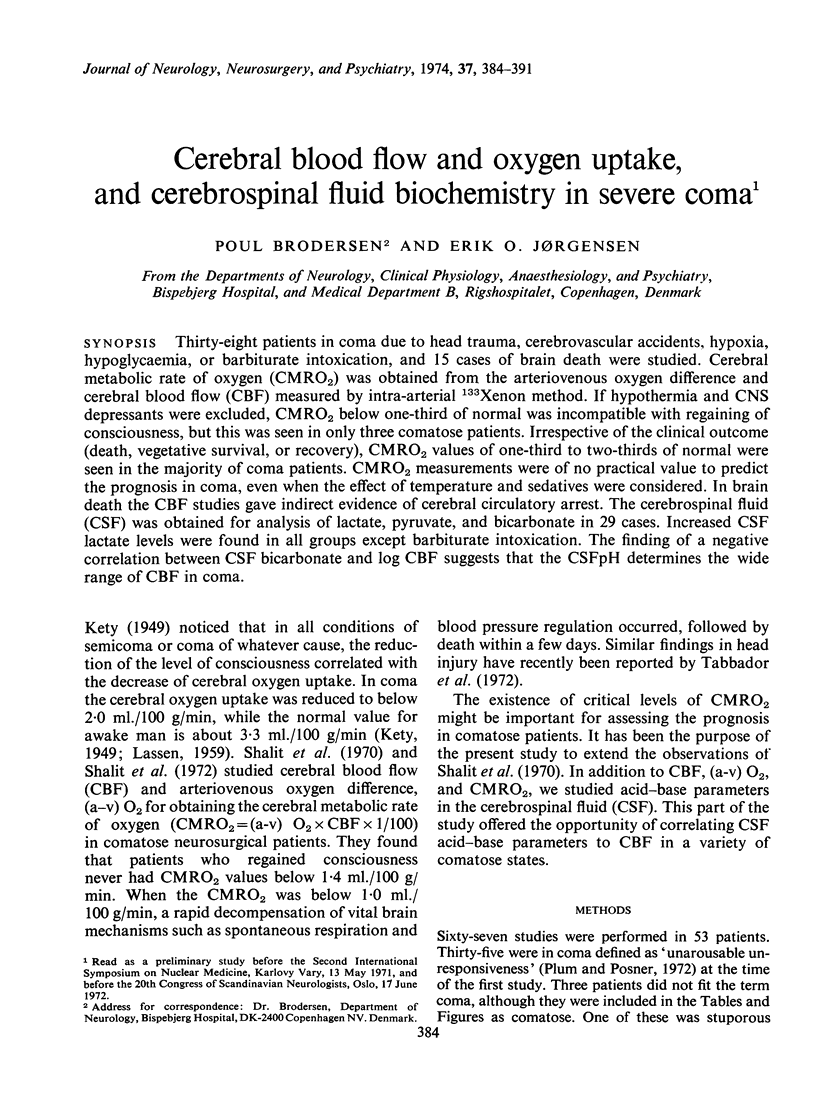
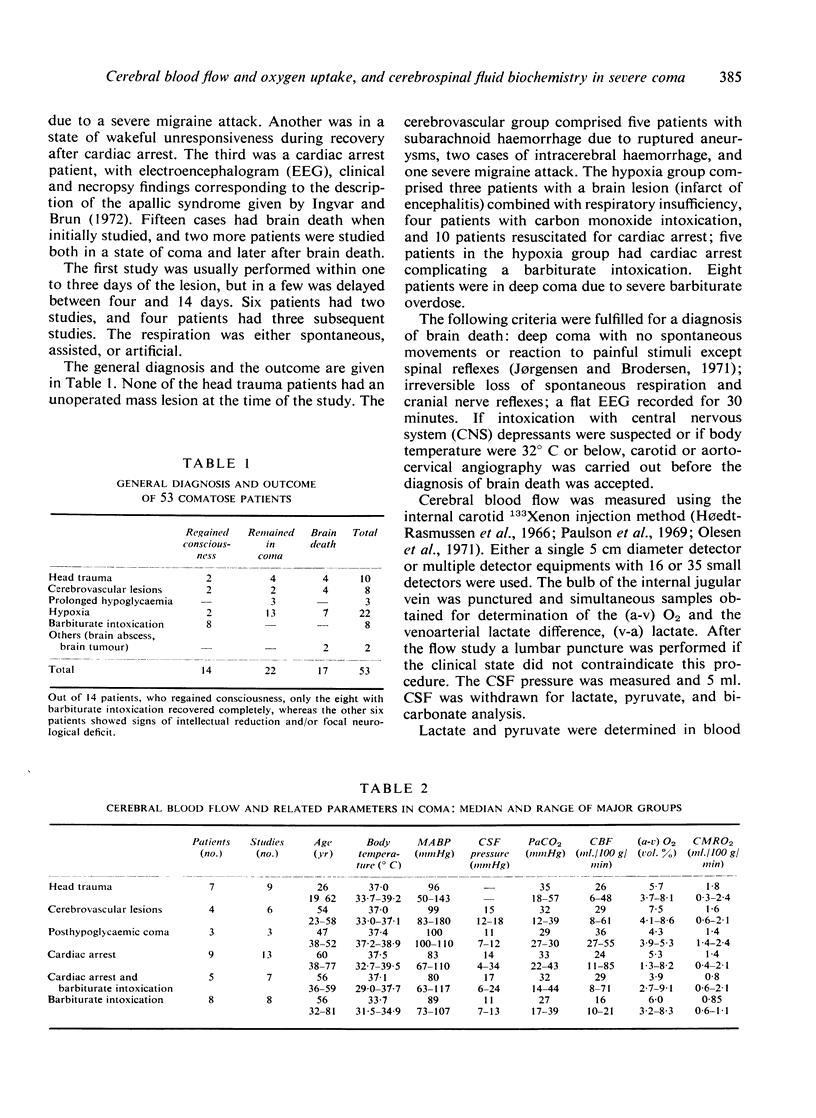
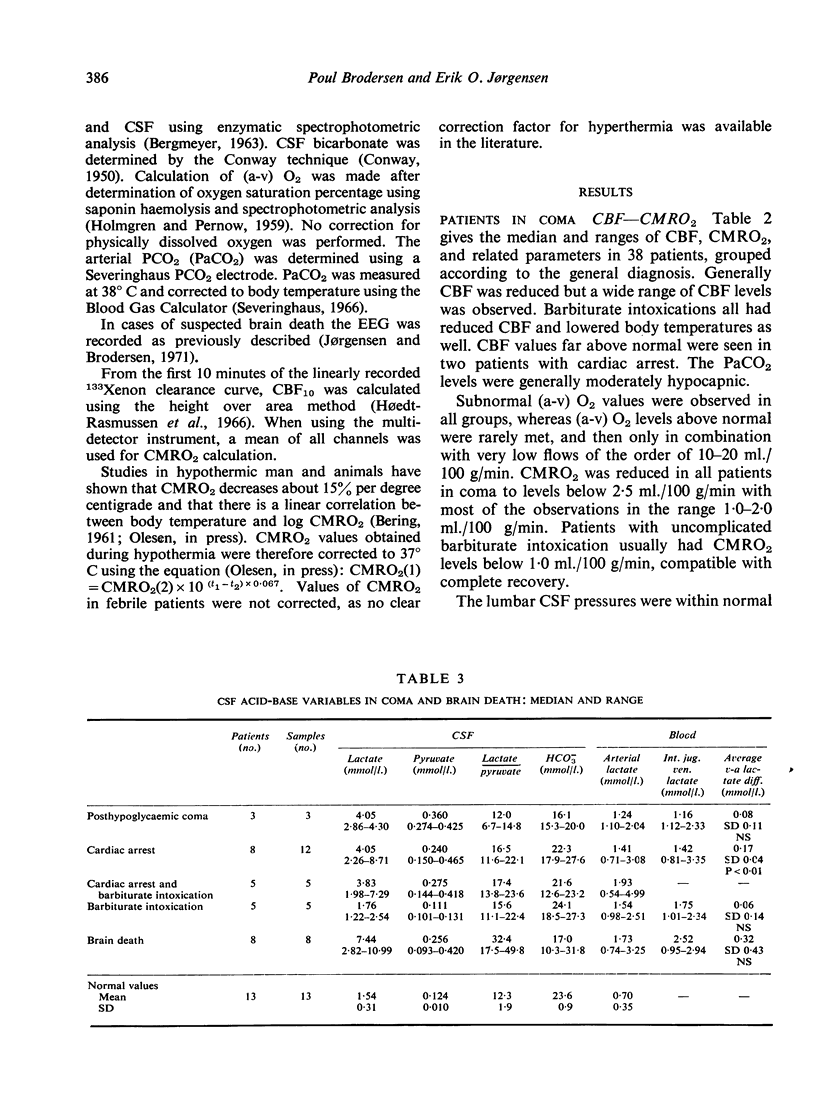
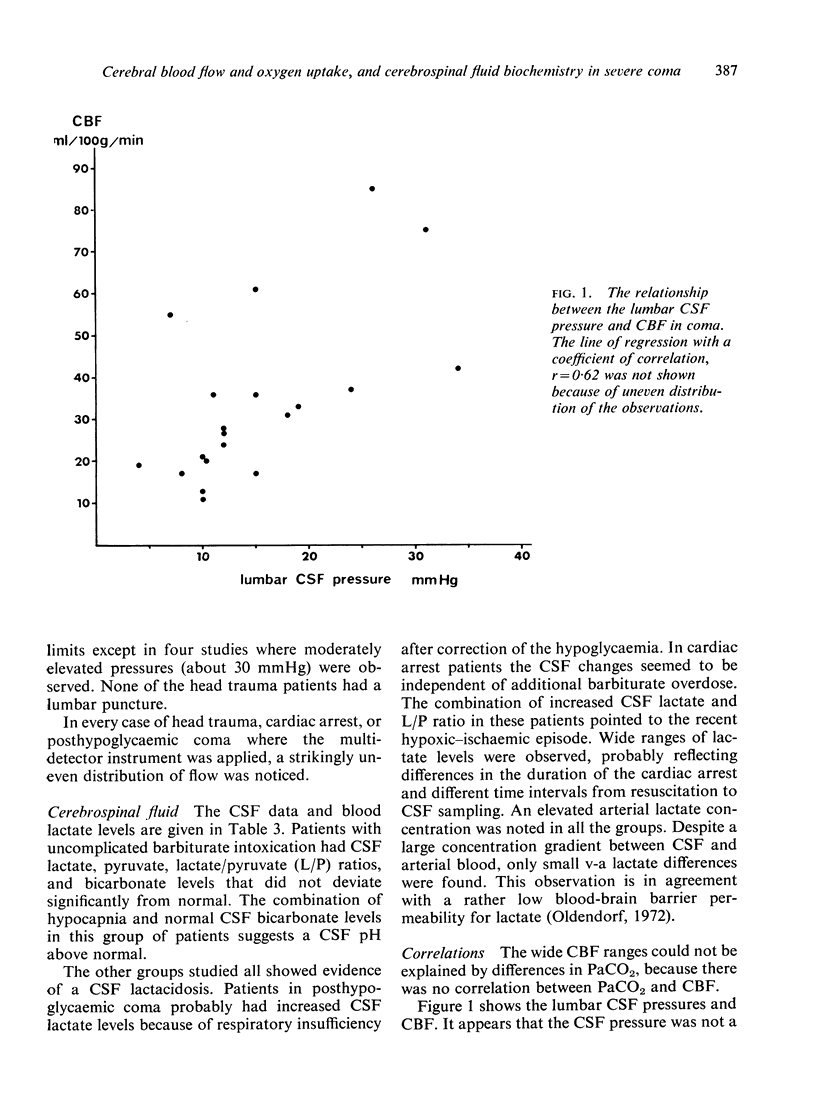
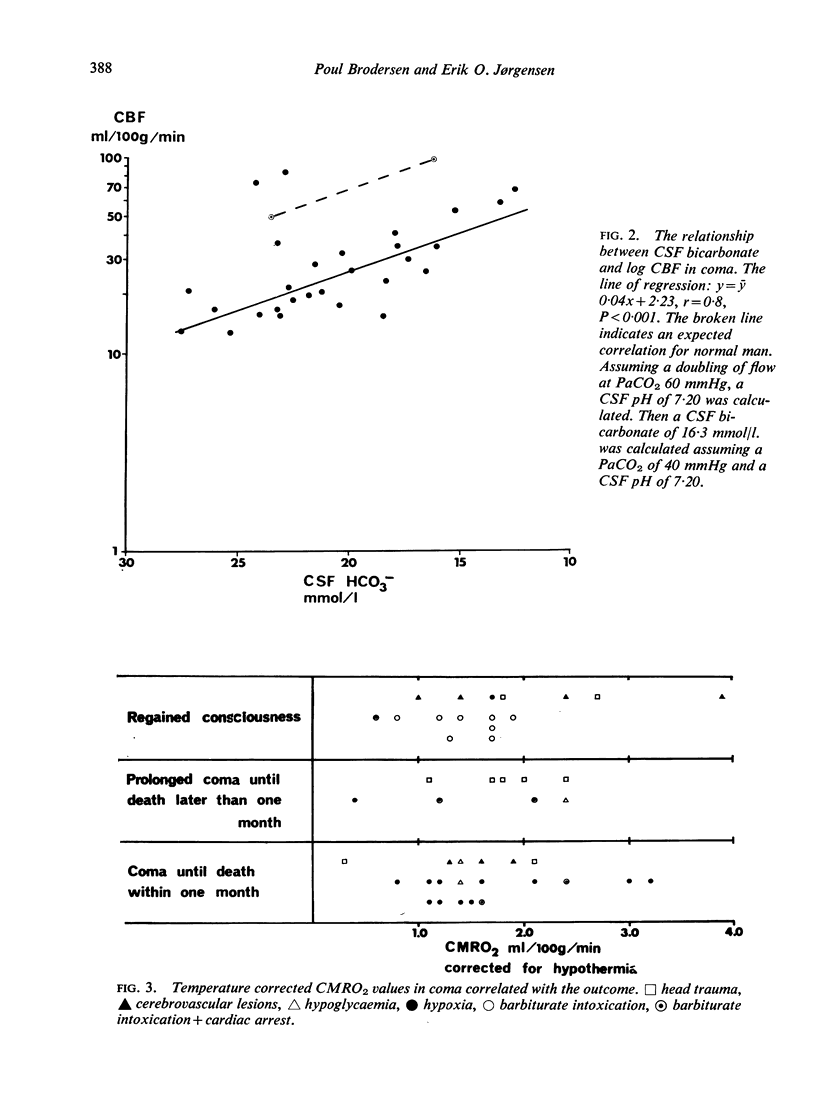
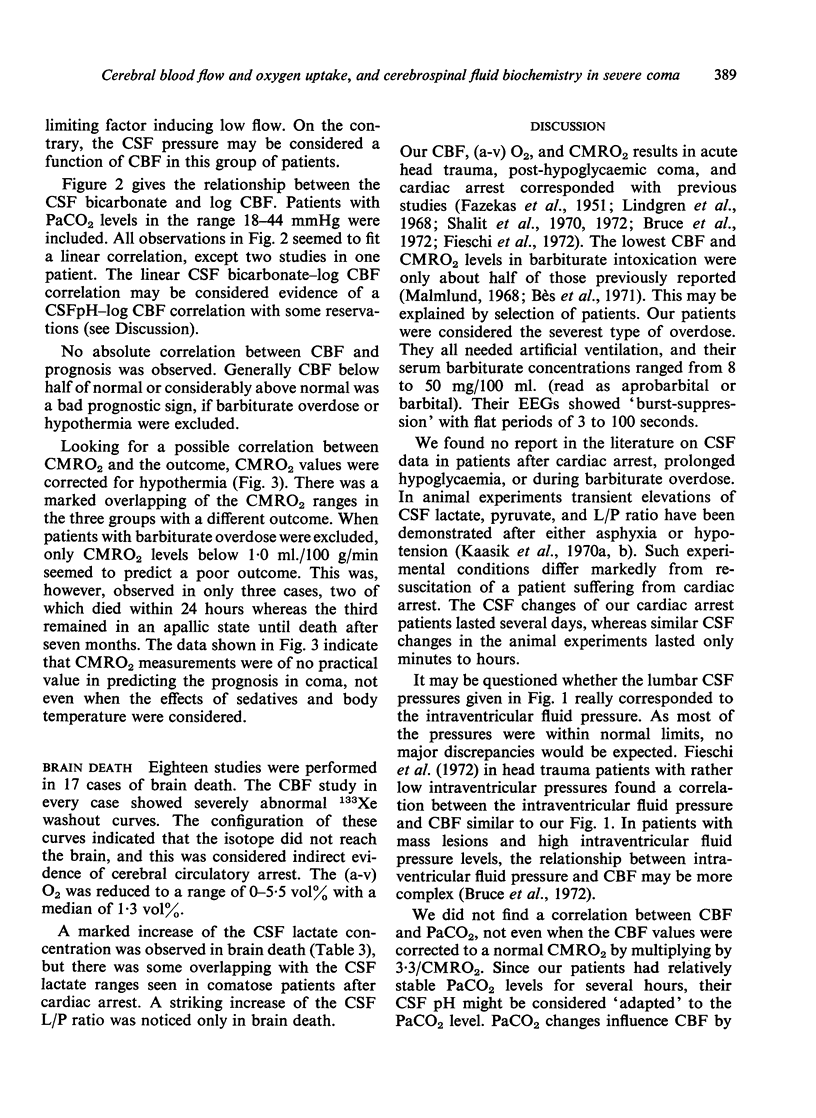
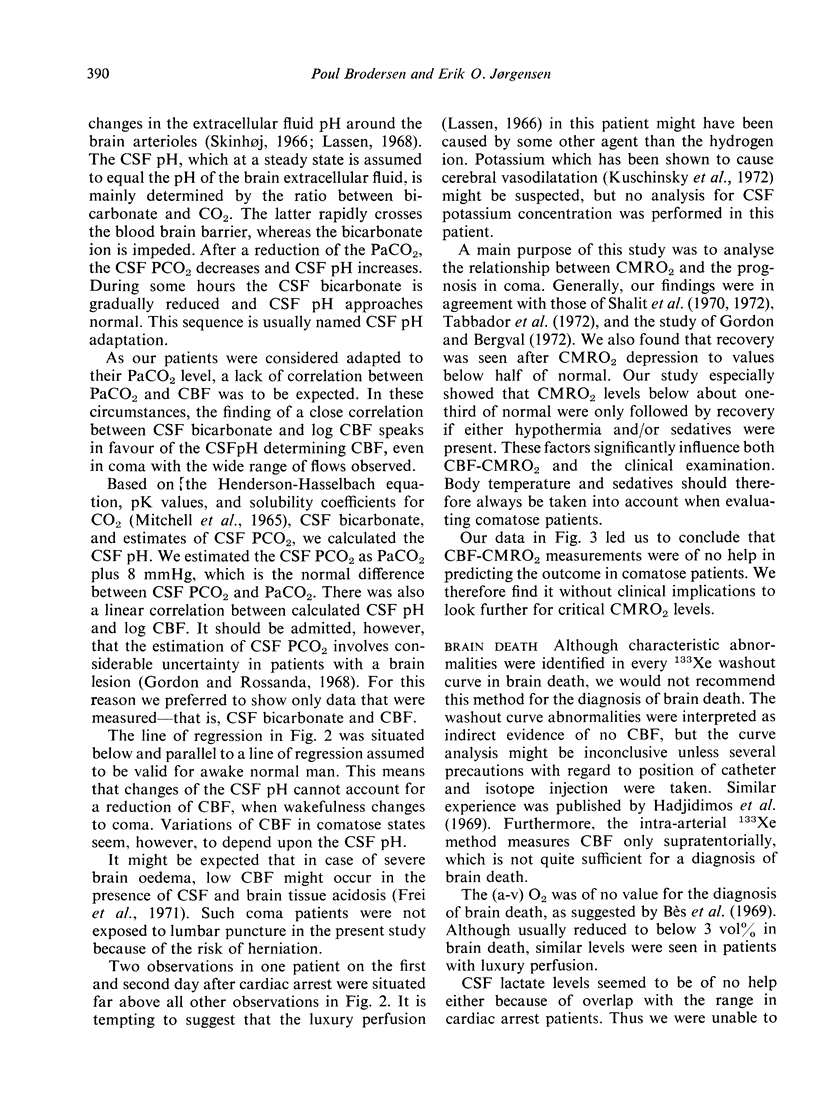
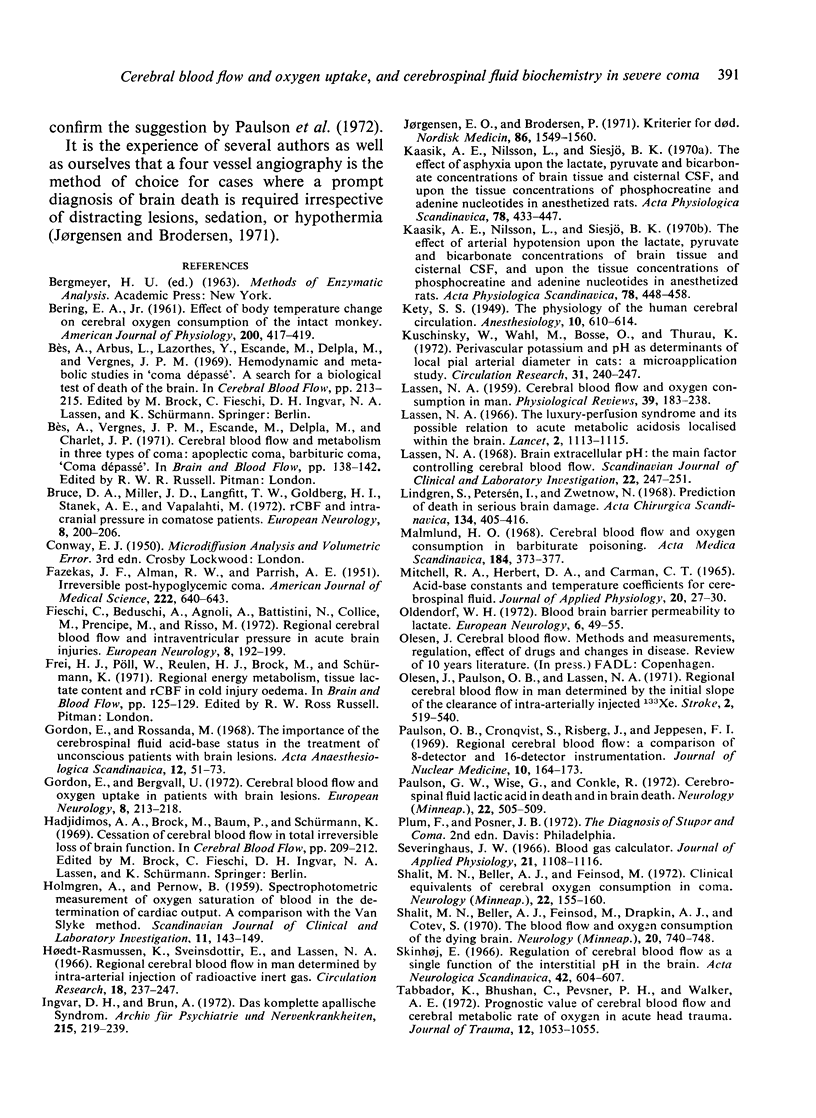
Selected References
These references are in PubMed. This may not be the complete list of references from this article.
- Brock M., Schürmann K., Hadjidimos A. Cerebral blood flow and cerebral death. Acta Neurochir (Wien) 1969;20(2):195–209. doi: 10.1007/BF01401960. [DOI] [PubMed] [Google Scholar]
- Bruce D. A., Miller J. D., Langfitt T. W., Goldberg H. I., Stanek A. E., Vapalahti M. rCBF and intracranial pressure in comatose patients. Eur Neurol. 1972;8(1):200–206. doi: 10.1159/000114578. [DOI] [PubMed] [Google Scholar]
- FAZEKAS J. F., ALMAN R. W., PARRISH A. E. Irreversible post-hypoglycemic coma. Am J Med Sci. 1951 Dec;222(6):640–643. doi: 10.1097/00000441-195112000-00004. [DOI] [PubMed] [Google Scholar]
- Fieschi C., Beduschi A., Agnoli A., Battistini N., Collice M., Prencipe M., Risso M. Regional cerebral blood flow and intraventricular pressure in acute brain injuries. Eur Neurol. 1972;8(1):192–199. doi: 10.1159/000114577. [DOI] [PubMed] [Google Scholar]
- Gordon E., Bergvall U. Cerebral blood flow and oxygen uptake in patients with brain lesions. Eur Neurol. 1972;8(1):213–218. doi: 10.1159/000114580. [DOI] [PubMed] [Google Scholar]
- Gordon E., Rossanda M. The importance of the cerebrospinal fluid acid-base status in the treatment of unconscious patients with brain lesions. Acta Anaesthesiol Scand. 1968;12(2):51–73. doi: 10.1111/j.1399-6576.1968.tb00411.x. [DOI] [PubMed] [Google Scholar]
- Hoedt-Rasmussen K., Sveinsdottir E., Lassen N. A. Regional cerebral blood flow in man determined by intra-arterial injection of radioactive inert gas. Circ Res. 1966 Mar;18(3):237–247. doi: 10.1161/01.res.18.3.237. [DOI] [PubMed] [Google Scholar]
- Jorgensen E. O., Brodersen P. Kriterier for død. Om vaerdien af klinisk-neurologisk undersøgelse, eeg og undersøgelse af hjernens gennemblødning for påvisningen af hjernens død. Nord Med. 1971 Dec 23;86(51):1549–1560. [PubMed] [Google Scholar]
- Kaasik A. E., Nilsson L., Siesjö B. K. The effect of arterial hypotension upon the lactate, pyruvate and bicarbonate concentrations of brain tissue and cisternal CSF, and upon the tissue concentrations of phosphocreatine and adenine nucleotides in anesthetized rats. Acta Physiol Scand. 1970 Apr;78(4):448–458. doi: 10.1111/j.1748-1716.1970.tb04681.x. [DOI] [PubMed] [Google Scholar]
- Kaasik A. E., Nilsson L., Siesjö B. K. The effect of asphyxia upon the lactate, pyruvate and bicarbonate concentrations of brain tissue and cisternal CSF, and upon the tissue concentrations of phosphocreatine and adenine nucleotides in anesthetized rats. Acta Physiol Scand. 1970 Apr;78(4):433–447. doi: 10.1111/j.1748-1716.1970.tb04680.x. [DOI] [PubMed] [Google Scholar]
- Kuschinsky W., Wahl M., Bosse O., Thurau K. Perivascular potassium and pH as determinants of local pial arterial diameter in cats. A microapplication study. Circ Res. 1972 Aug;31(2):240–247. doi: 10.1161/01.res.31.2.240. [DOI] [PubMed] [Google Scholar]
- LASSEN N. A. Cerebral blood flow and oxygen consumption in man. Physiol Rev. 1959 Apr;39(2):183–238. doi: 10.1152/physrev.1959.39.2.183. [DOI] [PubMed] [Google Scholar]
- Lassen N. A. Brain extracellular pH: the main factor controlling cerebral blood flow. Scand J Clin Lab Invest. 1968 Dec;22(4):247–251. doi: 10.3109/00365516809167060. [DOI] [PubMed] [Google Scholar]
- Lassen N. A. The luxury-perfusion syndrome and its possible relation to acute metabolic acidosis localised within the brain. Lancet. 1966 Nov 19;2(7473):1113–1115. doi: 10.1016/s0140-6736(66)92199-4. [DOI] [PubMed] [Google Scholar]
- Lindgren S., Petersén I., Zwetnow N. Prediction of death in serious brain damage. Acta Chir Scand. 1968;134(6):405–416. [PubMed] [Google Scholar]
- MITCHELL R. A., HERBERT D. A., CARMAN C. T. ACID-BASE CONSTANTS AND TEMPERATURE COEFFICIENTS FOR CEREBROSPINAL FLUID. J Appl Physiol. 1965 Jan;20:27–30. doi: 10.1152/jappl.1965.20.1.27. [DOI] [PubMed] [Google Scholar]
- Malmlund H. O. Cerebral blood flow and oxygen consumption in barbiturate poisoning. Acta Med Scand. 1968 Nov;184(5):373–377. doi: 10.1111/j.0954-6820.1968.tb02473.x. [DOI] [PubMed] [Google Scholar]
- Oldendorf W. H. Blood brain barrier permeability to lactate. Eur Neurol. 1971;6(1):49–55. doi: 10.1159/000114465. [DOI] [PubMed] [Google Scholar]
- Olesen J., Paulson O. B., Lassen N. A. Regional cerebral blood flow in man determined by the initial slope of the clearance of intra-arterially injected 133Xe. Stroke. 1971 Nov-Dec;2(6):519–540. doi: 10.1161/01.str.2.6.519. [DOI] [PubMed] [Google Scholar]
- Paulson G. W., Wise G., Conkle R. Cerebrospinal fluid lactic acid in death and in brain death. Neurology. 1972 May;22(5):505–509. doi: 10.1212/wnl.22.5.505. [DOI] [PubMed] [Google Scholar]
- Paulson O. B., Cronqvist S., Risberg J., Jeppesen F. I. Regional cerebral blood flow: a comparison of 8-detector and 16-detector instrumentation. J Nucl Med. 1969 Apr;10(4):164–173. [PubMed] [Google Scholar]
- Severinghaus J. W. Blood gas calculator. J Appl Physiol. 1966 May;21(3):1108–1116. doi: 10.1152/jappl.1966.21.3.1108. [DOI] [PubMed] [Google Scholar]
- Shalit M. N., Beller A. J., Feinsod M. Clinical equivalents of cerebral oxygen consumption in coma. Neurology. 1972 Feb;22(2):155–160. doi: 10.1212/wnl.22.2.155. [DOI] [PubMed] [Google Scholar]
- Shalit M. N., Beller A. J., Feinsod M., Drapkin A. J., Cotev S. The blood flow and oxygen consumption of the dying brain. Neurology. 1970 Aug;20(8):740–748. doi: 10.1212/wnl.20.8.740. [DOI] [PubMed] [Google Scholar]
- Skinhoj E. Regulation of cerebral blood flow as a single function of the interstitial pH in the brain. A hypothesis. Acta Neurol Scand. 1966;42(5):604–607. [PubMed] [Google Scholar]
- Tabaddor K., Bhushan C., Pevsner P. H., Walker A. E. Prognostic value of cerebral blood flow (CBF) and cerebral metabolic rate of oxygen (CMRO 2 ) in acute head trauma. J Trauma. 1972 Dec;12(12):1053–1055. doi: 10.1097/00005373-197212000-00006. [DOI] [PubMed] [Google Scholar]


